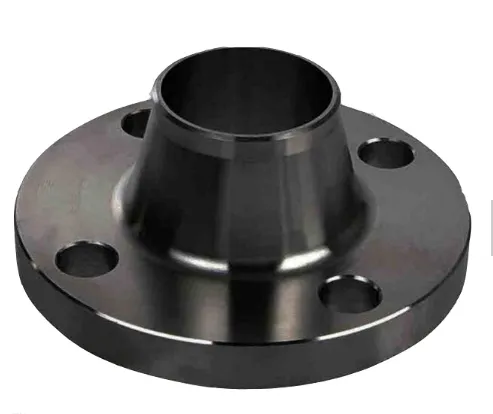-
Cangzhou Yulong Steel Co., Ltd.
-
Phone:
+86 13303177267 -
Email:
admin@ylsteelfittings.com
- English
- Arabic
- Italian
- Spanish
- Portuguese
- German
- kazakh
- Persian
- Greek
- French
- Russian
- Polish
- Thai
- Indonesian
- Vietnamese
- Zulu
- Korean
- Uzbek
- Hindi
- Serbian
- Malay
- Ukrainian
- Gujarati
- Haitian Creole
- hausa
- hawaiian
- Hebrew
- Miao
- Hungarian
- Icelandic
- igbo
- irish
- Japanese
- Javanese
- Kannada
- Khmer
- Rwandese
- Afrikaans
- Albanian
- Amharic
- Armenian
- Azerbaijani
- Basque
- Belarusian
- Bengali
- Bosnian
- Bulgarian
- Catalan
- Cebuano
- China
- China (Taiwan)
- Corsican
- Croatian
- Czech
- Danish
- Esperanto
- Estonian
- Finnish
- Frisian
- Galician
- Georgian
- Kurdish
- Kyrgyz
- Lao
- Latin
- Latvian
- Lithuanian
- Luxembourgish
- Macedonian
- Malgashi
- Malayalam
- Maltese
- Maori
- Marathi
- Mongolian
- Myanmar
- Nepali
- Norwegian
- Norwegian
- Occitan
- Pashto
- Dutch
- Punjabi
- Romanian
- Samoan
- Scottish Gaelic
- Sesotho
- Shona
- Sindhi
- Sinhala
- Slovak
- Slovenian
- Somali
- Sundanese
- Swahili
- Swedish
- Tagalog
- Tajik
- Tamil
- Tatar
- Telugu
- Turkish
- Turkmen
- Urdu
- Uighur
- Welsh
- Bantu
- Yiddish
- Yoruba

Oct . 06, 2024 20:13 Back to list
fire flange
Understanding Fire Flanges Crucial Components in Fire Protection Systems
Fire flanges are essential components within various fire protection systems, playing a pivotal role in ensuring safety in industrial, commercial, and residential settings. As the name suggests, these flanges are designed to facilitate fire-fighting equipment connections and enhance the overall effectiveness of fire prevention measures.
At their core, fire flanges serve as connectors between different sections of a piping system used for transporting fire-suppression agents, such as water, foam, or other chemicals. They are typically made from durable materials like stainless steel or carbon steel, capable of sustaining high-pressure scenarios and resisting corrosion. This resilience is vital, considering that fire suppression systems must remain operational even under stressful conditions.
One of the main applications of fire flanges is in sprinkler systems. These systems are ubiquitous in modern buildings, automatically activating during a fire to distribute water and control flames. Fire flanges ensure that pipes carrying water from storage tanks to sprinkler heads are securely joined, allowing for a reliable flow of water when it is most needed. The integrity of these connections is crucial, as any leaks or breaks could drastically reduce the system’s effectiveness.
fire flange

Moreover, fire flanges are also found in hydrant connections, where they link hoses and nozzles to fire hydrants
. These connections must be robust, as they are expected to withstand high pressures during firefighting operations. Fire flanges are often designed with safety features that prevent accidental disconnections, thereby ensuring a seamless flow of water from hydrants to firefighting equipment.In addition to their functional roles, fire flanges are subject to strict regulations and standards. Organizations such as the National Fire Protection Association (NFPA) provide guidelines on the installation and maintenance of fire protection systems, including the use of flanges. Adhering to these standards is essential not only for the effectiveness of fire-fighting systems but also for legal compliance and safety assurance.
Another important aspect of fire flanges is their maintenance. Regular inspections of flanges and connections are necessary to identify signs of wear, corrosion, or damage. Maintenance personnel must routinely check for leaks and ensure that all joints remain tight and secure. By addressing issues promptly, facilities can prevent potential failures during emergencies, which can be catastrophic.
In conclusion, fire flanges are integral to fire protection systems, serving as key connectors within piping networks that deliver water or other suppressants to combat fires. Their robust design, adherence to safety standards, and importance in maintenance contribute significantly to the overall safety of buildings. As we continue to prioritize fire safety in our environments, understanding and properly utilizing fire flanges will remain crucial in safeguarding lives and property against the threat of fire.
Latest news
-
ANSI 150P SS304 SO FLANGE
NewsFeb.14,2025
-
ASTM A333GR6 STEEL PIPE
NewsJan.20,2025
-
ANSI B16.5 WELDING NECK FLANGE
NewsJan.15,2026
-
ANSI B16.5 SLIP-ON FLANGE
NewsApr.19,2024
-
SABS 1123 FLANGE
NewsJan.15,2025
-
DIN86044 PLATE FLANGE
NewsApr.19,2024
-
DIN2527 BLIND FLANGE
NewsApr.12,2024
-
JIS B2311 Butt-Welding Fittings LR/SR 45°/90° /180°Seamless/Weld
NewsApr.23,2024











